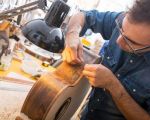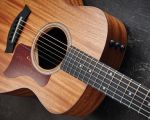How to Build Musical Instruments: A Fun and Creative Guide
- 1. Introduction to Building Musical Instruments
- 2. Choosing the Right Materials for Your Musical Instruments
- 3. Step-by-Step Guide to Building Simple Musical Instruments
- 4. Tips for Advanced Musical Instrument Construction
- 5. Inspiring Stories and Real-Life Experiences of Musical Instrument Builders
1. Introduction to Building Musical Instruments
Have you ever wanted to create your own music from instruments you built yourself? Building musical instruments can be a rewarding and creative experience. It allows you to explore your artistic side while also learning about sound, materials, and craftsmanship. Whether you're a beginner or an experienced musician, making your own instruments can enhance your musical journey.
In this article, I’ll guide you through the process of building various types of musical instruments, from simple ones like maracas and drums to more advanced instruments like guitars and violins. Let’s dive into the exciting world of musical instrument creation!
2. Choosing the Right Materials for Your Musical Instruments
The first step in building your own musical instrument is selecting the right materials. The materials you choose will affect the sound quality, durability, and ease of construction. Here’s a breakdown of some common materials used in different types of instruments:
2.1 Wood
Wood is a popular material for many stringed and percussion instruments due to its natural resonance. For instance, guitar bodies and drum shells are often made from high-quality hardwoods such as maple, oak, or mahogany. These woods provide rich, warm tones that enhance the music.
2.2 Metal
Metal is commonly used in wind instruments like trumpets, saxophones, and flutes, as well as in the construction of bells, cymbals, and other percussion instruments. Metals such as brass, copper, and steel are prized for their ability to vibrate and create clear, bright tones.
2.3 Synthetic Materials
In some cases, synthetic materials like plastic and fiberglass can be used to create more affordable or weather-resistant instruments. For example, some modern drumheads and flutes are made from synthetic materials to improve durability and reduce costs.
3. Step-by-Step Guide to Building Simple Musical Instruments
Once you’ve chosen your materials, it’s time to start building your instrument! Let’s look at a few simple instruments you can create at home:
3.1 DIY Maracas
Maracas are easy to make and are a fun introduction to building musical instruments. All you need are small plastic containers, rice or beads for filling, and some tape or glue to seal them. The materials can be found in most craft stores, and once assembled, you’ll have a great percussion instrument to shake along with your favorite tunes.
3.2 Homemade Drums
Building a simple drum can be a great way to understand the fundamentals of percussion. A small wooden box or plastic container can be used as the drum body, while a stretched piece of fabric or plastic can serve as the drumhead. Once you have the basic structure, you can experiment with different materials for drumsticks to change the sound.
3.3 Creating a Simple String Instrument
If you're feeling adventurous, you can build a simple string instrument like a ukulele or a guitar. Using a wooden box or a piece of sturdy cardboard for the body, and string or wire for the strings, you can create a functional instrument. Tuning pegs can be made from small wooden dowels, and you can experiment with different tensions on the strings to produce different notes.
4. Tips for Advanced Musical Instrument Construction
For those of you who are ready to take your musical instrument-building skills to the next level, there are some important tips to keep in mind. Here’s a brief overview of what’s involved in making more advanced instruments:
4.1 Acoustic Guitar Construction
Building an acoustic guitar requires precision and skill. You'll need high-quality wood like spruce for the top and rosewood for the sides and back. Proper shaping of the body, neck, and bridge is essential for good sound quality. Additionally, fitting the frets and installing the tuners requires careful attention to detail. While challenging, constructing an acoustic guitar can be a deeply satisfying project for any builder.
4.2 Violin Making
Making a violin involves woodworking and fine craftsmanship. You’ll need to carve the body from tonewood and create the neck and fingerboard. Stringing and bowing require a keen understanding of tension and vibration. The process can take weeks or months, depending on your skill level, but the result is a beautiful, handcrafted instrument.
5. Inspiring Stories and Real-Life Experiences of Musical Instrument Builders
Building your own musical instruments can be a deeply personal experience. Many builders started as hobbyists and later turned their passion into a profession. One inspiring story comes from a musician named Sam, who started by building a simple drum kit in his garage. Over the years, his skills grew, and he eventually opened a custom instrument shop where he crafts personalized guitars for musicians around the world.
Another notable builder, Emily, began crafting violins after years of playing the instrument. She found that the instruments she built sounded different from mass-produced violins and were much more resonant. Today, Emily’s violins are highly sought after by professional musicians.
These stories demonstrate how the simple act of building a musical instrument can lead to lifelong passions and even successful businesses. If you’ve ever been curious about making your own instrument, remember that your journey may start as a fun hobby but could evolve into something much more significant.
Building your own musical instruments is not only a creative outlet but also a great way to learn about sound, craftsmanship, and music. Whether you’re making a simple drum or a complex guitar, the process of building an instrument from scratch can deepen your appreciation for the music you create. So, if you’re ready to get started, grab some materials, follow the steps, and build your own musical masterpiece!








